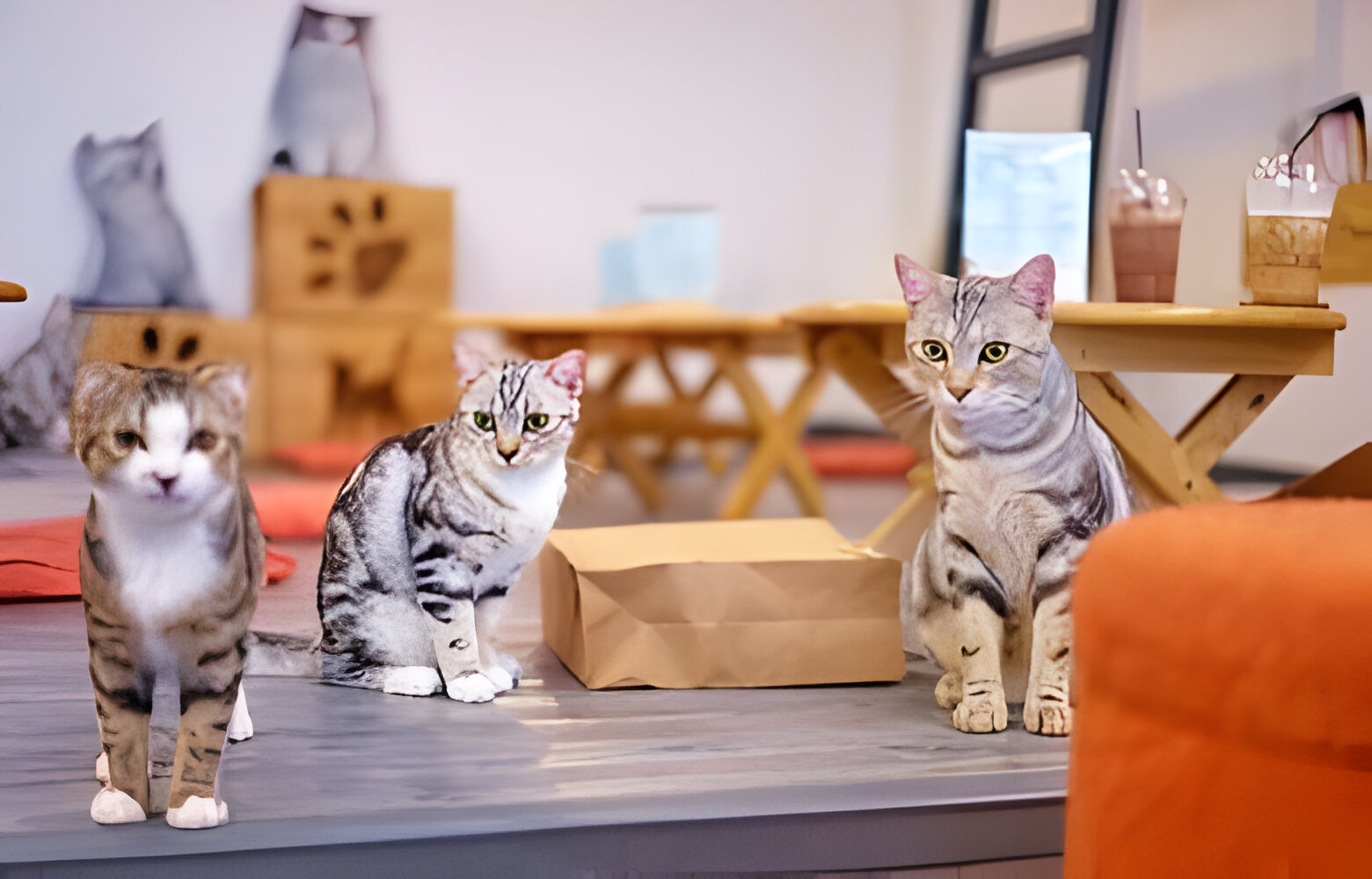Living with multiple cats can be a deeply rewarding experience, but it also comes with its own set of unique challenges. From territorial disputes to litter box issues, managing a multi-cat household requires patience, understanding, and some strategic planning. If you’re a proud cat parent to more than one feline friend, fear not! In this comprehensive guide, Pet Barn will delve into a plethora of valuable tips and strategies to help you maintain harmony and happiness among your furry companions under one roof.
- Provide Sufficient Resources: One of the fundamental aspects of managing multiple cats is ensuring that each cat has access to essential resources such as food, water, litter boxes, and scratching posts. Cats are territorial creatures, and resource guarding can lead to conflicts and stress. Ideally, you should have one litter box per cat plus one extra, placed in different areas of your home to prevent overcrowding and territorial disputes. Similarly, provide multiple feeding stations and water bowls to prevent competition and reduce mealtime stress.
- Create Vertical Space: Cats are natural climbers and enjoy perching in elevated spaces. Providing ample vertical space in your home not only allows your cats to exercise their instincts but also helps to reduce conflicts by providing escape routes and alternative territories. Invest in cat trees, cat walls, and perches to create elevated vantage points where your cats can retreat, observe their surroundings, and feel safe. Vertical space not only enhances your cats’ physical and mental well-being but also promotes harmony among multiple feline occupants.
- Foster Positive Socialization: Introducing new cats to each other requires careful planning and gradual introduction to prevent conflicts and territorial disputes. Start by keeping the new cats separated in a separate room with their food, water, and litter box, gradually allowing supervised interactions with the resident cats. Use positive reinforcement, treats, and toys to encourage friendly interactions and reduce tension between cats. Be patient and allow time for them to adjust to each other’s presence. With patience and positive reinforcement, most cats can learn to coexist peacefully with their feline housemates.
- Maintain a Routine: Cats thrive on routine, so establishing a consistent daily schedule for feeding, playtime, and grooming is essential for maintaining harmony in a multi-cat household. Consistency helps to reduce stress and anxiety, making it easier for your cats to coexist peacefully. Set aside dedicated play sessions for each cat to prevent competition for attention and ensure that they receive individualized care and affection. A predictable routine provides structure and stability, which is especially important for cats living in a multi-cat household.
- Monitor Behavior Closely: Closely monitoring your cats’ behavior and body language is crucial for identifying and addressing any issues that may arise in a multi-cat household. Aggression, excessive hiding, or litter box avoidance could indicate underlying issues that need to be addressed promptly. If you notice any concerning behavior, consult with your veterinarian or a professional animal behaviorist for guidance on how to address the problem effectively. Early intervention can prevent minor issues from escalating into major conflicts and ensure a harmonious living environment for all your feline companions.
- Enrich the Environment: Stimulating your cats’ minds and satisfying their natural instincts is essential for their overall well-being, especially in a multi-cat household. Provide plenty of environmental enrichment to keep your cats mentally and physically stimulated. Rotate toys regularly, introduce puzzle feeders, and create DIY hiding spots and tunnels to provide your cats with opportunities for exploration and play. Interactive toys and games also help to strengthen the bond between you and your cats while providing opportunities for exercise and mental stimulation. Enriching your cats’ environment can help alleviate boredom and prevent behavioral problems in a multi-cat household.
- Practice Fair Play: Ensuring that playtime remains fair and enjoyable for all your cats is essential for maintaining harmony in a multi-cat household. Avoid favoritism and ensure that each cat receives their fair share of attention, affection, and playtime. Rotate toys and playmates to prevent jealousy and reduce competition for resources. Encourage cooperative play and positive interactions between your cats to foster a sense of camaraderie and companionship. By promoting fair play and equal opportunities for interaction, you can create a harmonious living environment where all your cats can thrive.
- Invest in Quality Cat Furniture: Cat furniture such as scratching posts, cat trees, cat walls, and cozy beds are essential for providing your cats with comfortable and secure spaces to rest and play. Invest in high-quality, sturdy cat furniture that can withstand the rough play and scratching behavior of multiple cats. Choose designs that cater to your cats’ preferences, such as tall scratching posts, cozy hiding spots, and multi-level cat trees. Providing your cats with plenty of comfortable and inviting spaces to relax and play can help reduce conflicts and promote harmony in a multi-cat household.
Managing multiple cats under one roof requires patience, understanding, and a commitment to meeting each cat’s individual needs. By providing sufficient resources, fostering positive socialization, maintaining a routine, and enriching the environment, you can create a harmonious and happy home for your feline friends to thrive. Remember to monitor their behavior closely, seek professional advice when needed, and most importantly, shower them with love and affection. With the right approach and dedication, you can successfully navigate the joys and challenges of living with multiple cats and enjoy a fulfilling companionship with your furry family members.

